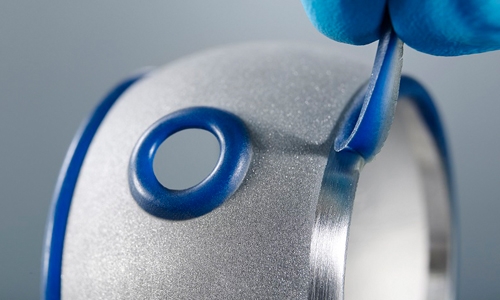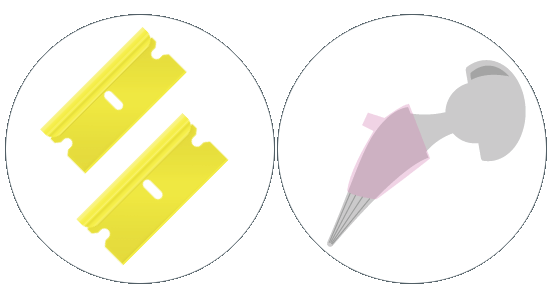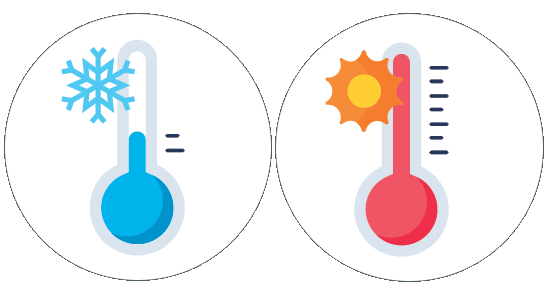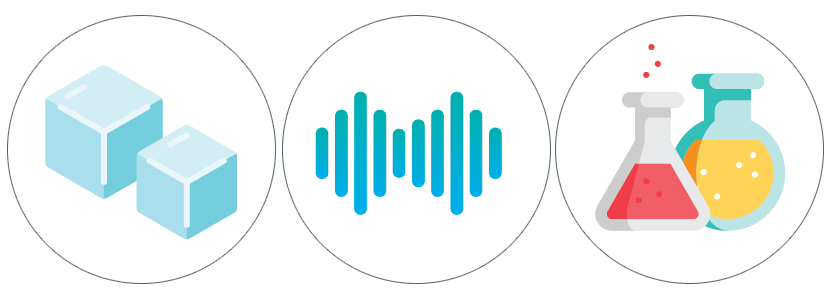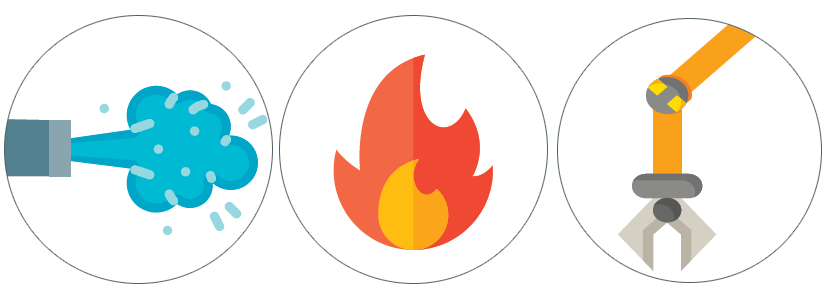10 Different Ways to Remove SpeedMask® Maskants
For manufacturers seeking materials to protect non-porous surfaces during aggressive finishing processes, Dymax temporary light-curable SpeedMask® maskants may be the solution. The products are easily applied in one layer and cured in seconds, replacing traditional labor-intensive application methods like wax, lacquer, and tape, helping to reduce costs and increase throughput. The maskants are easily removed once the parts are correctly processed, leaving residue-free surfaces. However, understanding the different techniques available is critical to a successful operation when deciding on the best removal method.
Understanding the Variables
Selecting the optimal procedure hinges on several important factors:
- Maskant type: Different SpeedMask formulations possess varying properties influencing their removal behavior.
- Substrate and surface finish: The underlying material and surface texture can impact adhesion strength and removal complexity.
- Maskant thickness: Thicker layers might require a different approach than thin layers.
- Part geometry: Complex shapes may demand specific techniques to ensure complete removal.
- Exposure limitations: Temperature, chemical, and water tolerance of the part and surrounding environment must be considered.
With these variables in mind, here are some common ways to remove SpeedMask maskants.
Manual Methods
Hand/Tool Manual Peel: Utilizing plastic razors, for manual lifting of the mask, offers direct control for targeted removal, especially on flat surfaces.
Tab: A tab is created out of maskant or another flexible plastic and used to initiate the peel the maskant. It is particularly beneficial for intricate geometries or large areas.
Temperature-Based Methods
Embrittlement with Cold: Some maskants can be made brittle with exposure to cold temperatures, enabling easier removal. Embrittlement may be achieved by dipping the part in liquid nitrogen, wrapping it in dry ice, or bringing its temperature below -60°C (-76°F) in a deep freezer.
Heat-Aided: Heat the maskant to soften it. Utilizing a heat gun is a more localized approach compared to heating an entire part in an oven or on a hotplate.
Semi-Automatic Methods
Dry Ice Blasting: Dry ice is accelerated in a pressurized air stream and directed at the masked surface. The blasting causes a thermal shock on the surface, causing shear stresses in the micro-layers of the maskant.
Ultrasonic: This process uses ultrasound to agitate a fluid and is sometimes done with water. Often, a solvent or additive is added depending on the cleaning objective. This technique is well-suited for parts with complex geometries.
Chemical: Exposure to aggressive solvents/chemicals may help weaken the bond strength of SpeedMask maskants. Since most Dymax maskants have chemical resistance, chemical soaking will typically not dissolve the maskant 100%. Mechanical removal, lifting it off, or a post-soak wash may be needed to remove the maskant completely.
Automated Methods
Water Jet: Use high-pressure water to remove the maskant for tailored cleaning. The water jet nozzle's diameter and shape (cone vs stream) can be adjusted, as well as the pressure, to fit the application better.
Incineration/Furnace Burn Off: SpeedMask maskants that are 100% organic will completely combust and reduce to ash when incinerated at appropriate temperatures/cycle times. Any remaining ash is easily blown off the surface with compressed air.
Automated Grippers: This method uses pneumatic clamps on an XYZ table to precisely grasp the masked area and pull the maskant in a Z or X/Y direction to peel it off. It is suitable for lower adhesion maskants, high-volume or intricate applications.
Choosing the appropriate removal method for SpeedMask maskants necessitates a comprehensive understanding of the application's unique requirements. By carefully considering the influencing factors and exploring the diverse techniques outlined above, you can ensure efficient, residue-free removal, safeguard your delicate surfaces, and achieve optimal project results. Remember, consulting with Dymax technical experts can provide invaluable guidance in selecting the most suitable removal method for your needs.

